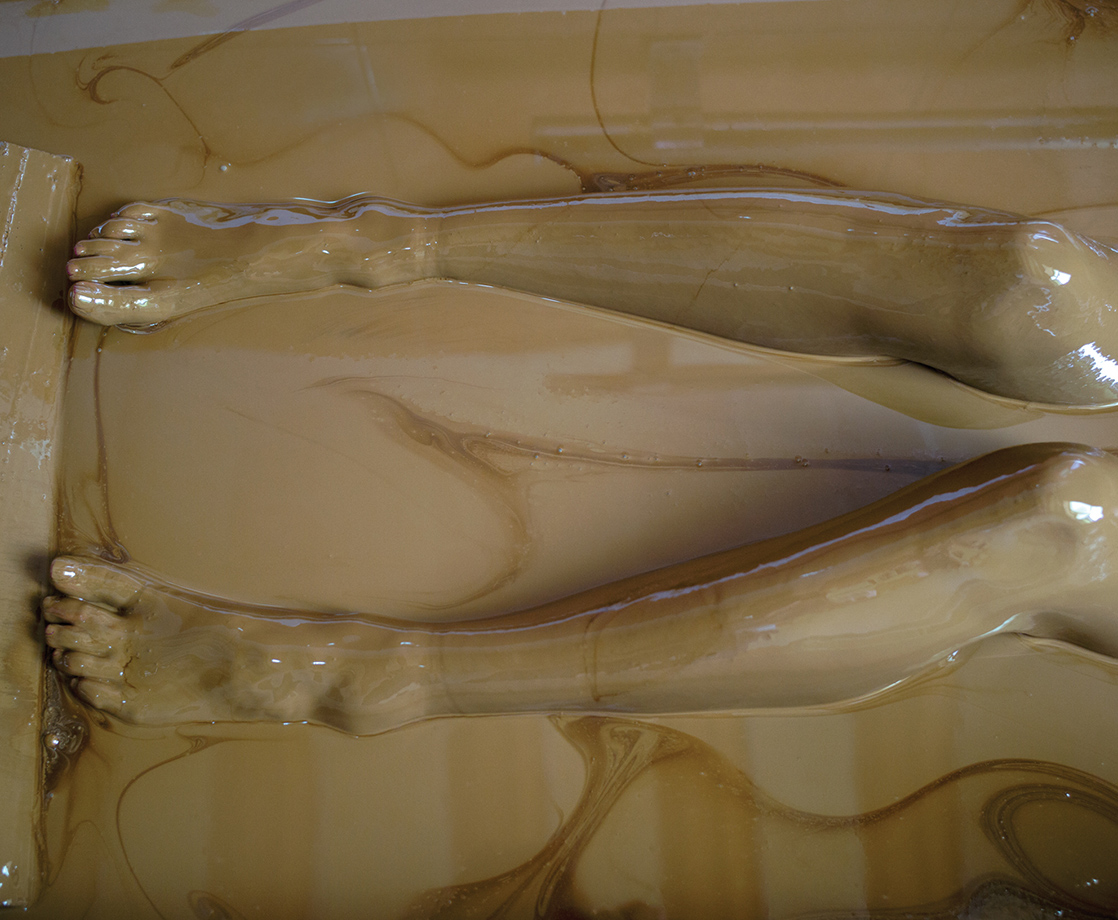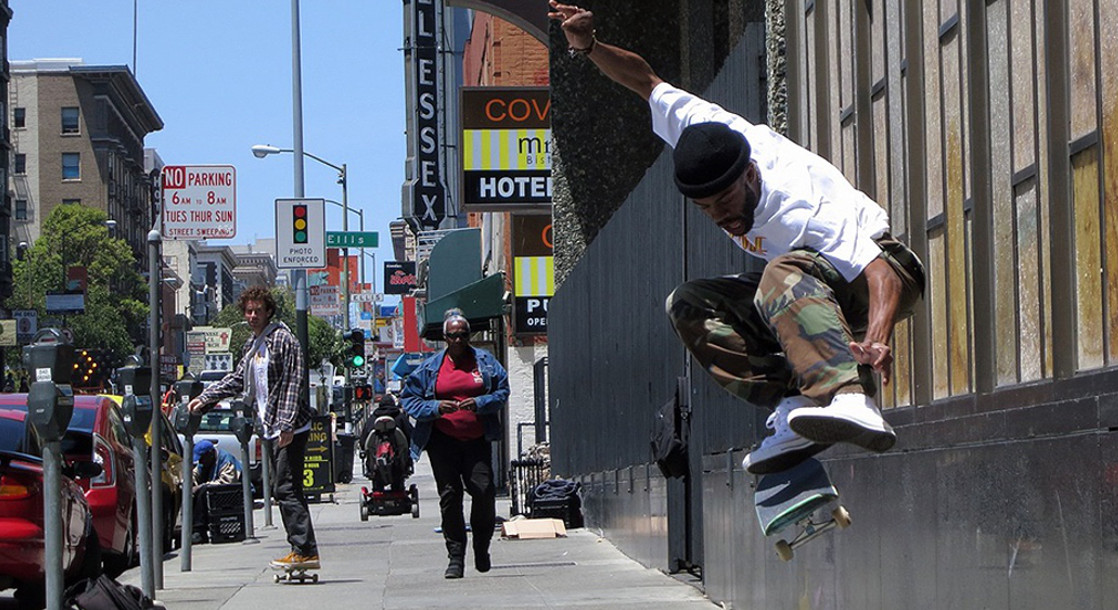All photos courtesy of FUEL Design and Miryam Omidi; lead photo of a crude oil bath in an Azerbaijian sanatorium by Claudine Doury
In Holidays in Soviet Sanatoriums, a new book published by our friends at FUEL Design, readers get a vantage into what it was like to take a vacation as a citizen living under the oppressive regime of the USSR — a forgotten aspect of communist life that reveals more about Soviet values than one might expect.
Starting in the 1920s, the government authorized two-weeks of vacation to workers each year, which was cemented a decade later when Joseph Stalin added the "right to rest" to the 1936 constitution. By the late '30s, nearly 2,000 sanatoriums were built across the USSR, and millions of citizens began visiting the hybrid medical institutions/spas on the dime of the state.
"Unlike Western vacations, which Soviets perceived as vulgar pursuits characterized by conspicuous consumption and idleness, holidays in the USSR were decidedly purposeful," writes author Maryam Omidi, who visited the remains of these spaces (some of which are still active) in over a dozen country while researching for the book. "Their function was to provide rest and recuperation, so citizens could return to work with renewed diligence and productivity." That said, the R&R stays were highly regulated, with strict schedules and restrictions on drinking, dancing, and making noise.
But while the sanatoriums "were designed in opposition to the decadence of European spa towns," they were actually a feat of architecture and innovation in their own right, with many of the spaces challenging the "notion that architecture under communism was unsightly and drab." Some, like Druzhba in Crimea, were "neo-futuristic" in design, featuring idiosyncratic and opulent architectural features. The sanatoriums also provided a medley of spa treatments, from traditional mineralwater baths to more experimental practices such as grape therapy, crude oil baths, radon-water douches, and magnetic sand therapy. "These sanatoriums offer a dizzying introduction to a whole new world of medicine," writes Omidi.
Alongside detailed history and interviews, the text presents an ebullient array of photos and archival material related to this facet of Soviet culture. MERRY JANE talked to Omidi about how she approached researching the book, as well as some of the more surprising discoveries — like "foam oxygen cocktails" — she uncovered along the way.

Sanatorium in Tskaltubo, Georgia — photo by Claudine Doury
MERRY JANE: Can you tell me a little bit about your own personal background? Prior to this text, what else were your working on professionally?
Maryam Omidi: I'm from London although I now live in New York where I'm back at school studying clinical psychology. Before making the move, I worked as a journalist in the UK, most recently as a freelancer. Before that I was at The Calvert Journal, a website that covers the "new east." I worked at the Journal for two years as a features editor and it was there that I first learned about sanatoriums.
Do you have any personal experiences with Soviet sanatoriums? What attracted you to the subject matter?
In 2015, I was travelling across Central Asia and was told about a sanatorium quite close to Dushanbe, the Tajik capital. I speak Farsi which is similar to Tajik so it made sense to stay at a sanatorium in a country where I could interact with other guests and staff. It's not that easy to find out about sanatoriums online or find decent pictures of them, especially those outside of Russia, so it was a bit of a stab in the dark. But I wasn't disappointed. The sanatorium, Khoja Obi Garm, is at the end of drive up a serpentine mountain trail. It's a huge brutalist block in the middle of the mountains — totally at odds with the urban context in which I'm used to viewing this kind of architecture. The radon-based treatments, the food, the hospitality — I was blown away by all of it and was left wanting more.

A salt mine in Belarus, photographed by Egor Rogalev
Can you tell me about the research process for the book? Where did you find the most useful information and did your research take you to any surprising places or resources?
I don't speak Russian so the research process initially involved a lot of help from Google Translate. This was fine when I was compiling the list of sanatoriums to visit but when it came to more in-depth, online research, various Russian-speaking friends and their friends helped out. Once we visited sanatoriums, I interviewed guests and staff with the help of translators, often the photographic team, many of whom speak Russian. Each of the photographers also fed in their own observations and notes from sanatorium archives where they existed.

A sanatorium in Druzhba, Crimea — photo by Michal Solarski
How many of the former sanatoriums did you visit while working on the book? Did any of them stand out to you personally?
As a team we visited numerous sanatoriums in 12 countries, although only 39 made it into the book. There were definitely ups and downs. We were turned away by several sanatoriums and denied visas to Turkmenistan. Architecturally speaking, there was a lot of variation. Many sanatoriums have been neglected, which made us wonder how much longer they'd be around for. Others have been completely renovated to resemble modern-day hotels, which was always disappointing to see. However, whenever we discovered a sanatorium with architecture that had been maintained but not modernized, it was a glorious experience and made the whole endeavor worthwhile.
There seems to be some contradictions embedded within the history of Soviet sanatoriums. For example, you write in the intro that "they were designed in opposition to the decadence of European spa towns… as well as the West's bourgeois consumer practices." At the same time, the sanatoriums are described as opulent in design and some of the spa treatments sound luxurious. In your research, did you notice this juxtaposition?
While the design of many sanatoriums was certainly pretty opulent, the sanatorium culture was pretty restrained. Guests would rise and sleep with alarms, and exercise and undergo treatments, according to a strict schedule. In the early years of the Soviet Union, people would visit sanatoriums on their own without their families and were forbidden to drink or dance or make too much noise. Sanatorium food would also have been pretty basic during this time, given that there were food shortages. The objective was to rest and recuperate and reflect on socialist ideals. As for the treatments that I experienced, the only one that felt luxurious was the crude oil bath offered in Naftalan in Azerbaijan where the stuff gushes out of the earth. Other treatments tend to be based on other natural resources from nearby areas such as mineral water, magnetic sand, or "medicinal" mud.

A sanatorium in Matsesta, Sochi. Patrons taking a mineral water bath — photos by Dmitry Lookianov
Similarly, you mention this dichotomy between Soviet leaders being engaged by "the issue of free time" but also quote someone who says sanatorium visitors were frustrated that they were expected "to live according to a timetable" while there. Were a lot of the sanatorium "perks" mere facades to make them seem more appealing to Soviet citizens?
I don't think it's a dichotomy — the difference is how we view "free time." For the Soviets, free time was not to be wasted, hence the strict timetables that were enforced in the earlier decades of the 20th century. I think even despite the strictness of sanatorium culture, the opportunity to travel and stay in another part of the country, either for free or at a subsidized rate, was highly sought after. Bear in mind too that the strictness diminished in later decades when workers were allowed to travel with their families and there was greater flexibility in their schedules. Similarly, towards the middle of the century entertainment that edified, such as lectures, was introduced to sanatoriums, so there was a progressive loosening of the initial rigidity of the 1920s and 1930s.
You write about treatments such as radon-water douches and magnetic sands being a "whole new world of medicine." What therapy treatment did you find the most surprising or interesting?
I think the majority of treatments at sanatoriums use water and heat in a variety of different ways, both of which have been used throughout history to alleviate illness. The most surprising treatments were in the petroleum spa town of Naftalan in Azerbaijan, which made use of crude oil. Although lying in a bathtub of crude oil could be seen as decadent, it was quite a slippery and graceless experience.

Sanatorium patrons receiving magnetic sand therapy in Kolkhida, Georgia — photo by Claudine Doury
I saw a photo of a "foam oxygen cocktail" and I'm absolutely fascinated! What exactly is it, and what was its intended use/effects?
An oxygen cocktail is a foam enriched with oxygen that reportedly boosts your energy levels. There are actually a number of "oxygen bars" in a number of cities around the world such as New York and London.
You write that, "in principle, industrial workers and those with medical conditions were granted priority, though in practice, the best accommodation usually went to those with money and connections." Was this widespread knowledge at the time? What were the best accommodations like compared to the worst?
While there would have been architectural differences in the best and the worst accommodations, the real difference was the location. The most prized spots were those by Black Sea in places such as Crimea, Sochi, and Odessa. I'm not 100% certain whether it was common knowledge that vouchers for sanatoriums in these locations went to those with money and connections for visits during the summer rather than winter months, but I imagine it would have been evident to many. I interviewed a former teacher from Kyrgyzstan who said she waited years to get a voucher to stay at a sanatorium and never did, as they always went to Russian workers who were held in higher esteem than Kyrgyz workers.

A sanatorium in Rodnik, Russia — photo by Dmitry Lookianov
The goal of sanatoriums was to deliver "maximum post-sanatorium productivity," right? So ultimately these "vacations" were all in the service of labor, rather than offering a real disconnect from it. Does that sound on point or resonate with you at all?
I would say that's half-right. While sanatorium stays allowed visitors to recuperate so that they could return to work with their energy levels replenished, it was also a time for contemplation of socialist ideals and self-edification. I think the idea was to disconnect from work and focus on a little R&R, just not in the way we conceptualize rest today.
I love the term "ideology, constructed" as well as your line "although aesthetically diverse, sanatoriums were infused with the utopian values of the era, which championed architecture as a vehicle for social reform." Could you expand on this a little bit? It seems to be a core tenant of the book/subject matter.
Architecture is arguably always ideological, capturing the zeitgeist of the time. Soviet sanatoriums are no different, except that perhaps their ideological underpinnings were made explicit. They were designed to be social condensers, bringing people together to think about socialism. From work to rest, the Soviets gave a great deal of thought to the values that the ideal citizen would embody and sanatoriums were just a small part in the overarching socialist machinery of the time.
For more on "Holidays in Soviet Sanatoriums," including where you can order a copy, visit FUEL Design's website here











